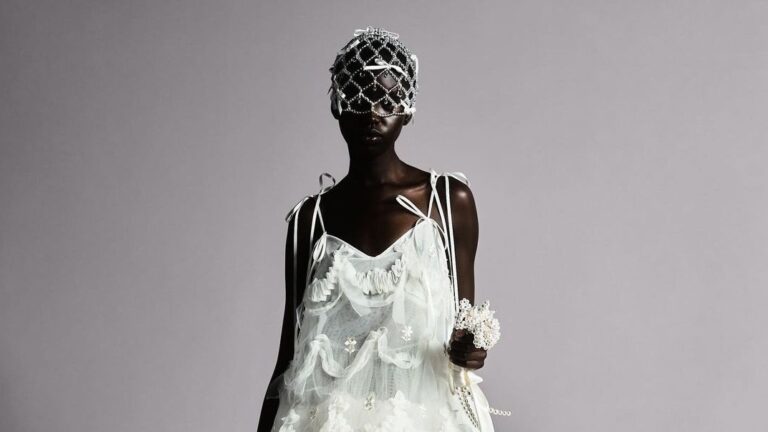At 21 years old, in a tight purple mini, beige mesh top, red hair and heavy chest, the breakup felt like the end of a titillating novel. But as the redness returned to my face, so did my wardrobe. It was a transition from my ex-partner’s edgy ripped jeans and fake Dr. Martens to an entirely new wardrobe that I chose to fill the emptiness I felt. Three years after leaving my romantic dream, I began to question the real reasons behind my shopping habits.
Masking my very flamboyant personality under the guise of a “cool girl” style to please others, I had fallen prey to the “please yourself” marketing ploys. When I looked deeper, as I often do on lonely nights after a breakup, I realized that this new form of retail therapy, draped in dopamine dressing and coquettecore, was all a world of trends cleverly repackaged to heal me. Somehow, more than any therapist, I was more willing to listen to the seduction of brands’ whispered advice, like how just wearing a bow on my head would instantly fix my people-pleasing days with the bandaid of Girls’ Generation.
The origins of trend aesthetics
Style has become a collective decision for our generation, not an individual one. Everyone loves new trends, but rather than adopting certain silhouettes or styling elements, they see them as an entire lifestyle. For example, Coquettecore doesn’t just sell ruffled skirts, but a world rooted in Coppolaism, showcasing how to inject overt femininity into everything from your clothes to your apartment and even your pet dachshund. “As a fashion influencer, it’s very tempting to respond to the Internet trend cycle to gain popularity. When I feel this urge, I try to dig deeper into what I like about that trend,” Arabella Bartelloni admits in an interview. The reason? The focus on the self, brought about by the pandemic.
If the pandemic has taught us anything besides baking banana bread, it’s to be more conscious about how we dress. But what may have started out as a positive message quickly became the next marketing gimmick to draw consumers in. Athleisure was born out of our reluctance to go out in our comfy pajamas, opening the door to a trend cycle driven by other behaviors and emotions.
Hello dear friend,
Post-pandemic, fashion became a medium that transported us to simpler times, reminiscent of a carelessness rarely seen in the adult world. The need for comfort went beyond a search for soft fabrics. We sought tangible familiarity, making nostalgia a major driver of trends. Enter preppy fashion and Ivy League attire, whose vestiges can be seen in cult-favorite vests, ties, and pleated skirts. It promised comfort and familiarity, transporting us back to Gilmore Girls reruns, pristine female friendships, and first loves — a life untainted by the burden of paying taxes and cinematic attention spans. We enjoyed the shared experience it brought, evoking collective memories of being careless teenagers in an increasingly alienating digital age.

